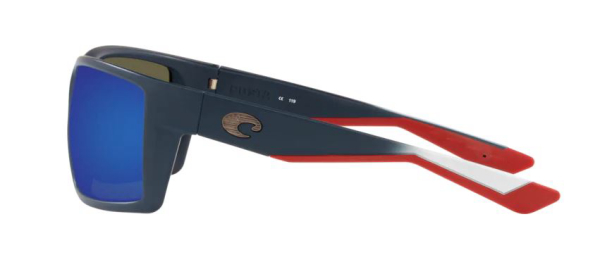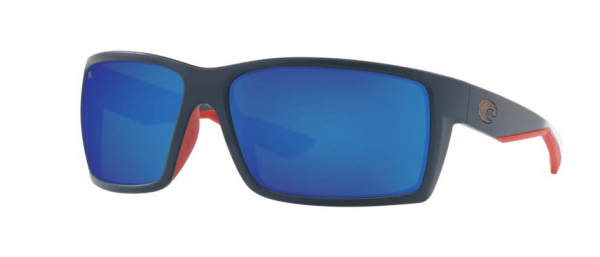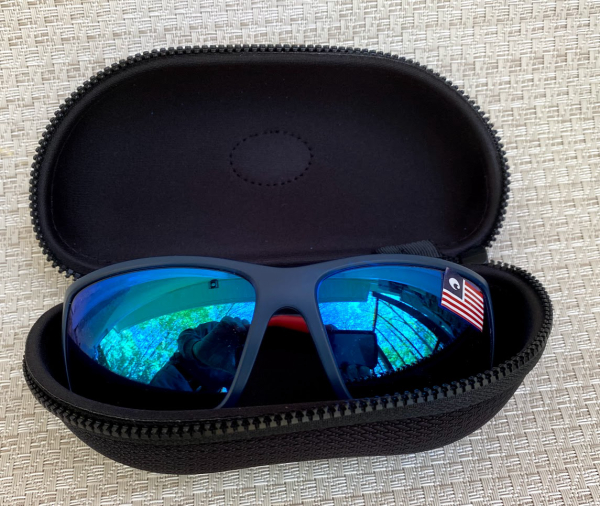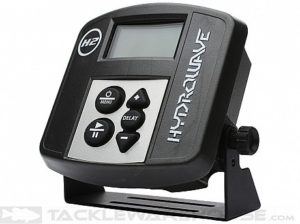SURF’S UP, PRICES DOWN
from Traditions Media

St Croix Rods for surf fishing
St. Croix redesigns Legend® Surf rod series to deliver heightened performance and value
Park Falls, WI (August 14, 2019) – St. Croix’s pinnacle surf rod series, Legend® Surf, has been refined for 2020 to offer anglers increased performance at a reduced price. Updates include an all-new Fuji® guide train designed to provide optimal surf fishing performance with improved durability. In the sand or from the jetties, Legend Surf continues its legacy of leading the way in high-performance surf fishing.
The world’s most demanding surf anglers have good reasons to celebrate… twelve of them, actually. That’s the number of premium-performance rod models in St. Croix’s Legend Surf series, and all of them have been newly redesigned with state-of-the-art componentry. Less-demanding surfcasters should be celebrating, too, because new, lower pricing means these legendary, top-tier surf rods are now accessible to more passionate anglers than ever before.
“For years the Legend Surf rod family has been recognized as the pinnacle of factory-built surfcasting rods,” says St. Croix Regional Account Manager Alex Smay. “They’re just a joy to fish. They’re incredibly light and offer performance that is second-to-none.”
Building on Legend Surf’s exceptional performance characteristics and capabilities, St. Croix engineers relied heavily on the expertise of St. Croix pro team anglers to further improve and expand the series for the serious techniques that surf anglers regularly use. “There are a lot of good rods out there if you’re going to throw some bait out in the surf and let it sit,” says Smay.
“But we’ve never been satisfied with that. We really dialed the new Legend Surf series in for plug fishing, working pencil poppers and swimmers, all the wooden lures that surf anglers in the Northeast use, and the poppers employed down in Florida. Anglers who are after seriously big fish in rough and often nocturnal conditions… those are the folks who have really come to appreciate what this rod family has to offer when it comes to casting distances, working the baits in a certain way and fighting big, powerful fish… whether 50-pound stripers or 50-inch snook.”
Smay comments on the key Legend Surf design change: “We had really great componentry on these rods, but in listening to angler feedback, diehard surf anglers told us they actually preferred a different guide train. It’s another example of how we at St. Croix work with anglers to design the rods they want. In this case, changing the guides not only improved the performance and the durability of the rods, but it also allowed us to lower Legend Surf rod prices across the board, making these premium tools available to an increased number of anglers. So, it’s a win-win.”
Renowned surf junkie and St. Croix pro-staffer, Alberto Knie, or “Crazy Alberto” as he’s called, lives up to his name. The Florida surf-caster has spent years warring the surf all along the Atlantic coast. He’s one of the experienced anglers who provided St. Croix with feedback leading to Legend Surf’s design changes.
“As an avid angler and one who likes to target trophy fish, from the initial Legend Surf to the new and improved, the difference is remarkable,” says Knie. “These rods excel in the most extreme and demanding situations.”
Knie has used the new rods for big stripers, tarpon to 150 pounds, 50-pound bull reds, and monster 50-inch-plus snookzilla during his travels up and down the East Coast – all on artificial baits.
“The new titanium Fuji® K-Series KW guides are lightweight and durable, and St. Croix also upped the size of the main guide ring up to 50 mm, which further improves casting performance,” he says. “If you’re looking for specialized, custom-level high-performance rods with extreme castability, the new Legend Surf is it. It’s been fine-tuned over the years to meet the needs of the most extreme trophy-hunting surf anglers in the game. From the subtleties of its finish – which is tremendous – to the unparalleled customer service you get with the 15-year transferable warranty, you cannot go wrong with the components, performance, durability, and all the other benefits that come with owning a Legend Surf rod. They are literally the Best Rods on Earth.”
Designed and handcrafted at the St. Croix Rod factory in Park Falls, U.S.A., Legend Surf series rods are available in ten spinning and two casting models to perform flawlessly in any surf fishing duty. Spinning rods range in length from 7’ to 12’, while casting choices run 10’6” to 11’. Each rod carries a 15-year transferable warranty backed by St. Croix Superstar Service.
ST. CROIX LEGEND SURF SPINNING MODELS
7’ one-piece, medium power, moderate-fast action spinning (GSS70MMF)
8’ one-piece, medium power, moderate-fast action spinning (GSS80MMF)
9’ two-piece, medium power, moderate-fast action spinning (GSS90MMF2)
9’ two-piece, medium power, moderate action spinning (GSS90MM2)
10’ two-piece, medium power, moderate-fast action spinning (GSS100MMF2)
10’6” two-piece, medium power, moderate action spinning (GSS106MM2)
10’6” two-piece, medium-heavy power, moderate-fast action spinning (GSS106MHMF2)
11’ two-piece, medium-heavy power, moderate-fast action spinning (GSS110MHMF2)
12’ two-piece, medium-heavy power, moderate-fast action spinning (GSS120MHMF2)
12’ two-piece, heavy power, moderate-fast action spinning (GSS120HMF2)
ST. CROIX LEGEND SURF CASTING MODELS
10’6” two-piece, medium-heavy power, moderate-fast action casting (GSC106MHMF2)
11’ two-piece, medium-heavy power, moderate-fast action casting (GSC110MHMF2)
From striped bass and blues in the Northeast to big drum in the Mid-Atlantic and the outright bruisers of the southern coast, St. Croix’s improved Legend Surf rods offer hard-fishing surf rats the opportunity to seriously step up their game for a new, lower price that comes without compromise. MSRP runs from $470 to $670.
LEGEND SURF FEATURES
Integrated Poly Curve® (IPC®) mandrel technology
Advanced Reinforcing Technology™ (ART™)
High-modulus/high-strain SCIV carbon with FRS for unparalleled strength and durability
Offset, slim-profile ferrules on two-piece models provide one-piece performance
Fuji® K-Series KW tangle-free guides with SLIM SiC rings and titanium frames for unrivalled, 100% corrosion-proof performance
Fuji® DPS Deluxe reel seat with Back Stop™ lock nut and PVD-plated hoods
Custom neoprene handle provides comfort and durability. Positive grip improves when wet
Two coats of Flex-Coat slow cure finish
Ten spinning and two casting models with rod lengths ranging from 7’ to 12’ cover nearlyall sur f fishing possibilities
Engineered and built for extreme surf fishing performance
15-year transferable warranty backed by St. Croix Superstar Service
Designed and handcrafted in Park Falls, U.S.A.
About St. Croix Rod
Headquartered in Park Falls, Wisconsin, St. Croix has been proudly producing the “Best Rods on Earth” for over 70 years. Combining state-of-the-art manufacturing processes with skilled craftsmanship, St. Croix is the only major producer to still build rods entirely from design through manufacturing. The company remains family-owned and operates duplicate manufacturing facilities in Park Falls and Fresnillo, Mexico. With popular trademarked series such as Legend®, Legend Xtreme®, Avid®, Premier®, Tidemaster®, Imperial®, Triumph® and Mojo, St. Croix is revered by all types of anglers from around the world.
 Long known for high-quality, on-water eyewear,
Long known for high-quality, on-water eyewear,  The models with glass lenses are somewhat heavier than some other brands just because Costa builds their stuff to last, but they’re not so heavy that you notice the weight on your nose or ears. The hinges, for example, are not only stout stainless steel, but they’re inset inside the durable composite frame. This not only protects them from salt spray and the resulting corrosion but adds reinforcement at the point where most glasses eventually fail.
The models with glass lenses are somewhat heavier than some other brands just because Costa builds their stuff to last, but they’re not so heavy that you notice the weight on your nose or ears. The hinges, for example, are not only stout stainless steel, but they’re inset inside the durable composite frame. This not only protects them from salt spray and the resulting corrosion but adds reinforcement at the point where most glasses eventually fail.  I like that the ear pieces are curved to grip the contours of the head, but have relatively little drop behind the ears. To me, this design stays on well and is easier to take on and off than those with a pronounced drop in the ear pieces. (I always put CablZ eye glass retainers on my sunglasses before wearing them the first time—saves losing them overboard, plus I always know where they are when they’re not on my head.)
I like that the ear pieces are curved to grip the contours of the head, but have relatively little drop behind the ears. To me, this design stays on well and is easier to take on and off than those with a pronounced drop in the ear pieces. (I always put CablZ eye glass retainers on my sunglasses before wearing them the first time—saves losing them overboard, plus I always know where they are when they’re not on my head.) 
